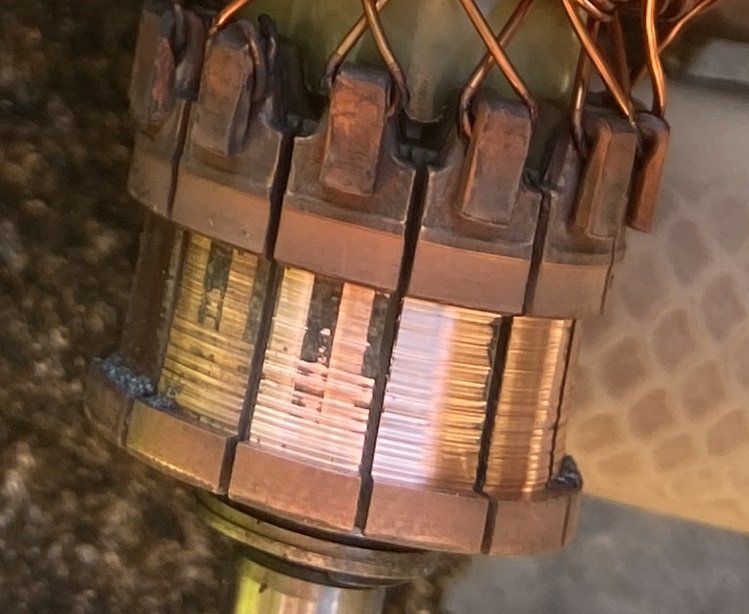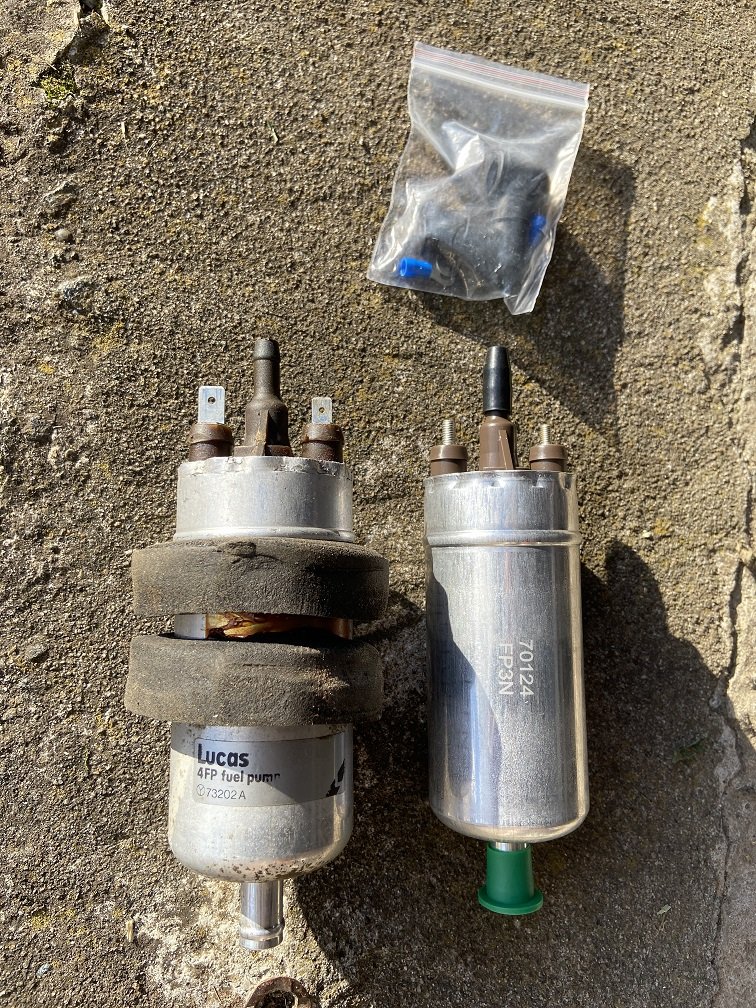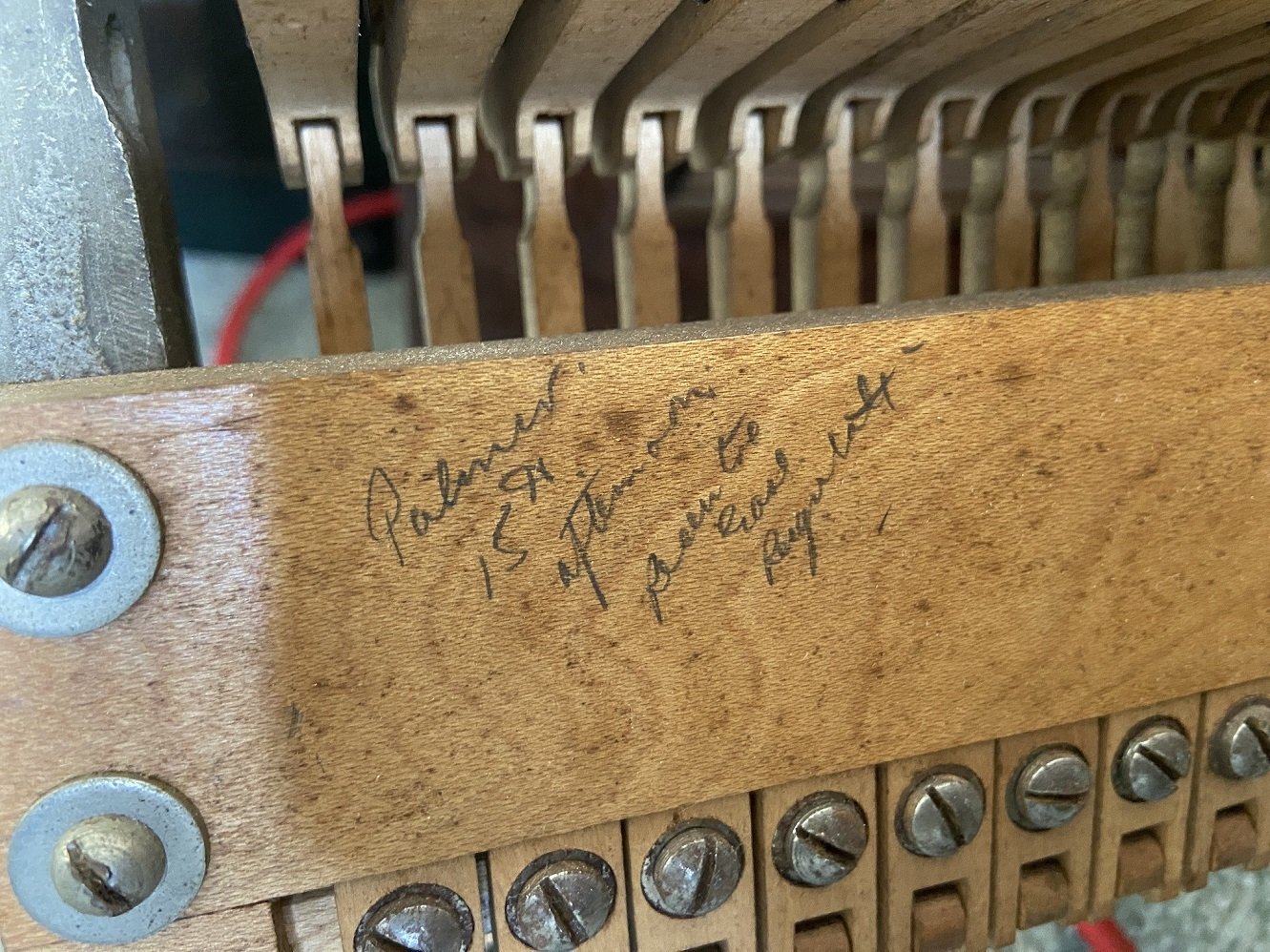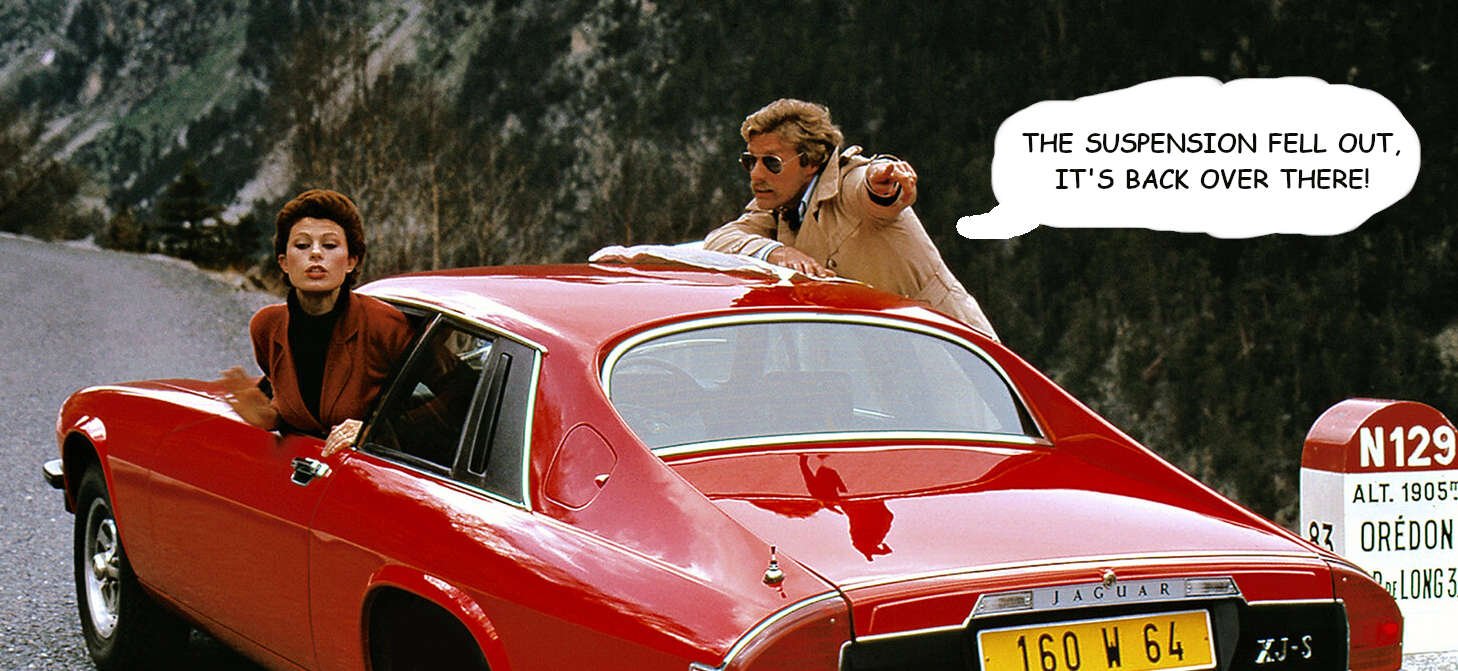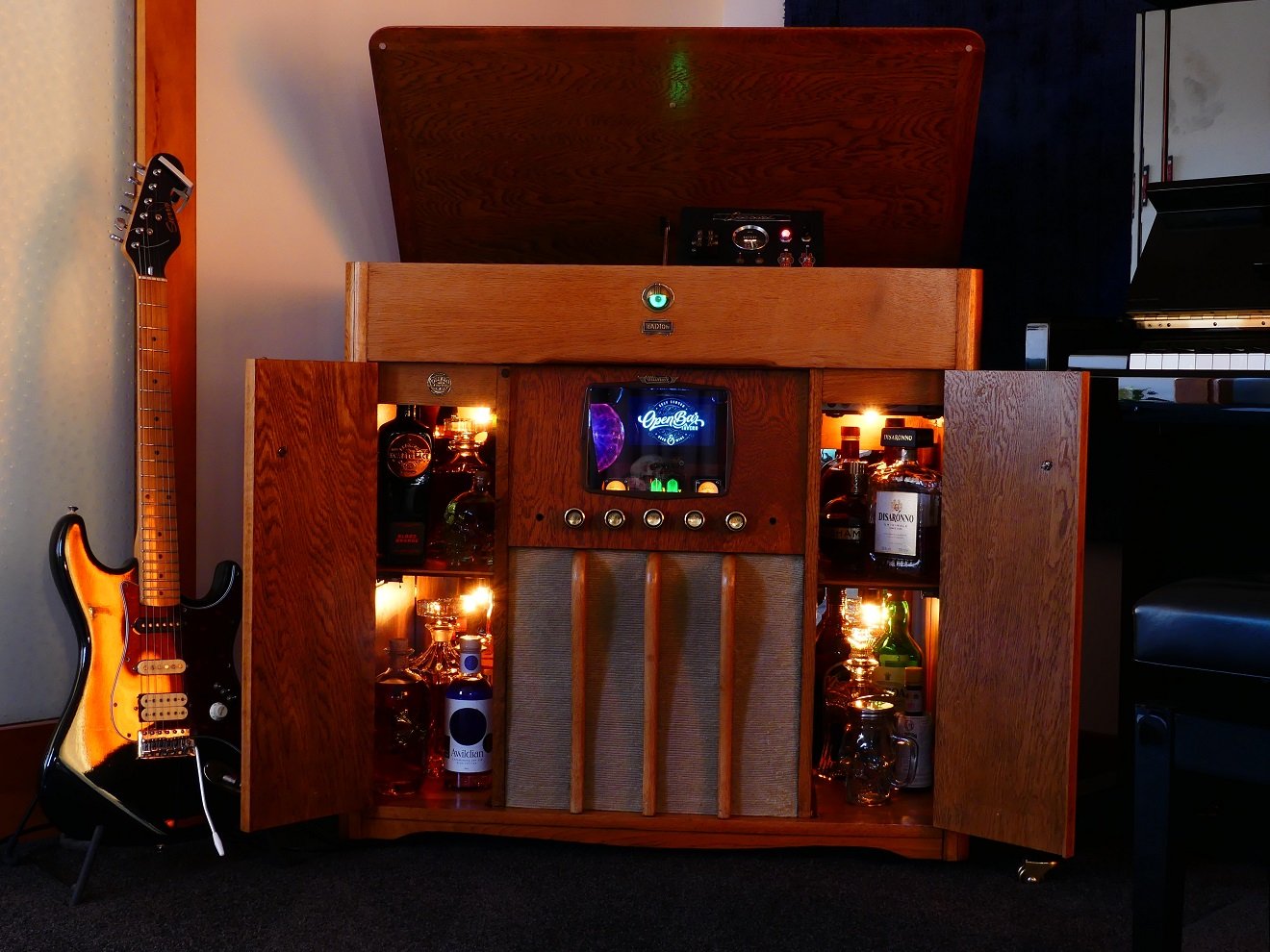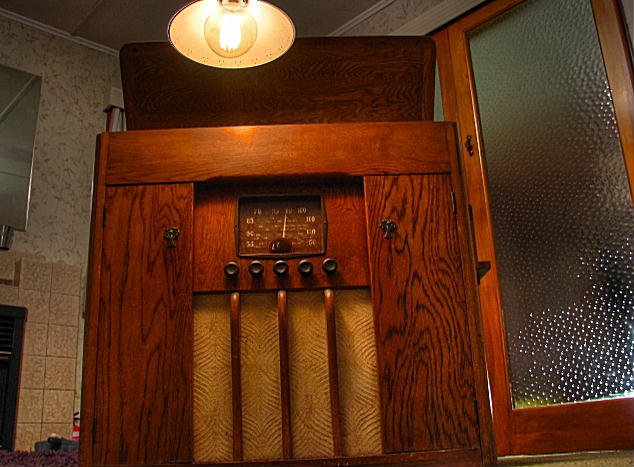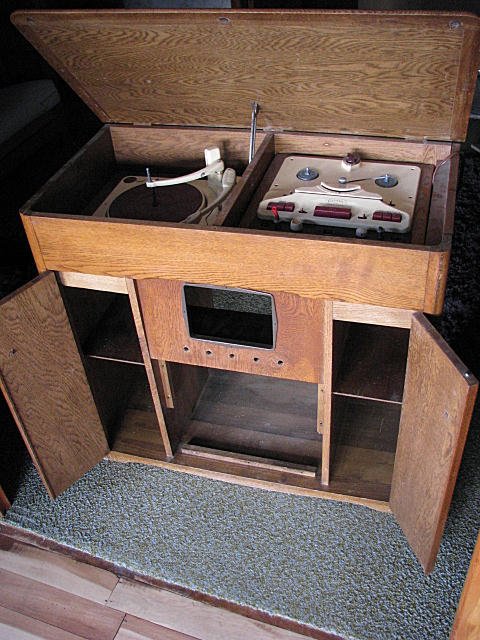-
Posts
1891 -
Joined
-
Last visited
-
Days Won
2
Thousand Dollar Supercar last won the day on March 17
Thousand Dollar Supercar had the most liked content!
About Thousand Dollar Supercar
- Birthday 10/16/1979
Profile Information
-
Gender
Male
-
Interests
Music - I play keyboards in a classic rock cover band, and play piano for fun. My taste in music ranges from traditional / classic metal through rock, blues, oldies, classic country and random stuff.
Amateur electronics at a basic level, ditto for photography, and I watch too much YouTube.
Converted
-
Local Area
Auckland
Thousand Dollar Supercar's Achievements

Committed (5/5)
5.4k
Reputation
-
The pump gets a continuous supply of whatever voltage the alternator's putting out (square #35 in the diagram below connects to the battery). The supply is switched via a relay controlled by the ECU, therefore supply would be either on or off (not variable). Even if the alternator drive belt decided to slip at high rpm, the pump would receive a minimum of the battery voltage minus some losses. If the supply is 'iffy' as in too low, it must be magically reducing (but not switching off) through unknown means, and only at high rpm I've previously measured the voltage at the pump terminals to be around 13V at idle. If the supply is iffy as in too high, I don't think I'd have a fuel starvation / rev limiter effect at full power Although I don't think I'd find anything, I could connect a meter to the pump's terminals, set it to min/max logging mode, and then go and do some pulls. I really doubt that's the problem though. I believe that my XJ-S has an open-loop fuel injection system with no oxygen sensor. It probably makes assumptions about the fuel pressure and fires the injectors based on the airflow meter or throttle position or something. This would mean that it has no clue that anything's going wrong. It couldn't make any adjustment in response to low fuel pressure / lean mixtures, let alone log some kind of fault code once the injectors reach 100% duty cycle. It would just idle poorly and shrug, suddenly lose power at full noise and shrug...
-
After running fine during Nats, the Jag has started doing its fuel-starvation-at-full-power thing again. @h4nd had already pointed out that the commutator in my fuel pump had looked pretty worn. Here it is at 100% scale in the only photo which I hadn't already resized to low res: Looks like it has done 36 years of service. I guess all that missing copper was caught by the old fuel filter and isn't still inside my fuel system somewhere.. I bought a new fuel pump, which is supposedly for the XJS though it's slightly smaller and has a different style of terminal: Annoyingly, nothing changed! The problem is still present with the new fuel pump installed. This probably means that the old pump was never the cause in the first place, even before I performed the mod to stop its impeller housing spinning. I'm still working under the assumption that the problem is caused by fuel starvation rather than by ignition, because surely if the coil was too weak to provide enough sparks at high rpm, there would be all kinds of backfires from the unburned fuel? My old Alfa would cut the spark to limit engine rpm, and when I hit that limiter too aggressively, it would just about blow the muffler apart. I guess I could have a partial blockage anywhere between the pump and the injectors, or a problem with the fuel pressure regulator (which is controlled by manifold vacuum), or maybe the ECU is actually bringing in a rev limiter when it shouldn't.. I think I've noticed the rev counter spaz in the downward direction in response to the problem occurring, but generally you want to keep your eyes on the road when nearing redline, and you instinctively back off instantly if the engine starts doing strange stuff. I still have the other issue of the engine not running smoothly at idle and low rpm - when you're under the bonnet you can detect an intermittent shaking of the motor like a partial misfire, up until the point where the rpms are high enough to mask it. I don't know how to proceed with the diagnosis. Any ideas? Might have to take it to somebody who can actually measure stuff (exhaust CO, fuel pressure, injector duty cycle or whatever)?
- 34 replies
-
- 8
-

-
Thousand Dollar Supercar's old piano
Thousand Dollar Supercar replied to Thousand Dollar Supercar's topic in Other Projects
Interesting. A guy from my industry randomly decided to retrain as a primary school teacher, but he didn't last long in the field. I used to flat with a primary teacher years ago, and I remember her making strong vodka jellies to take to school and share around the staffroom at lunchtime - presumably those helped the teachers get through the day. I had David Jenkin assess my piano years ago. I found it interesting and I was sorely tempted to throw money away on a rebuild, but instead I bought a new piano for some reason. Now I have two pianos, because of course I can't get rid of the old one. More than a decade ago I was already finding it difficult to book piano tuners - they were busy, which meant they would tell me their one and only available time slot a month or two in the future, and I'd have to make that work. Then they'd decide to specialise in tuning expensive Steinway grands and stop accepting jobs for old British uprights. The piano tuner I use now is someone I was forcibly transferred to when my previous tuner basically said he was too busy. She's not the norm for the industry as she's about a decade younger than me. She was able to bring forward her return visit to finish the hammer bushing replacement to earlier this week. So that work is mostly done now, but it has an annoying short-term downside - as Tim Finn would say, what I need is a positive action, but there's a fraction too much friction. Ooo, and I noticed this written on the back of the action: I think it says "Palmer. 15th afternoon Recentre Ease Regulate". Palmer was my great grandfather's last name, and ironically he must have been getting the same work done to the action as I've just had done. -
Thousand Dollar Supercar's old piano
Thousand Dollar Supercar replied to Thousand Dollar Supercar's topic in Other Projects
"If ye don't tek yer meat, ye can't tune any piano! How can ye tune yer piano if ye don't tek yer meat?" I have a tuning hammer that I bought online, and I could probably do an OK job with the aid of an app, but I'll save that for when I move out of Auckland to where there aren't any tuners. Until then, I know I cannae match fahrty yeers of expeerience in any wee, shepe or farrim. Barglaralarrum. -
Thousand Dollar Supercar's old piano
Thousand Dollar Supercar replied to Thousand Dollar Supercar's topic in Other Projects
I'm behind schedule on this and I haven't posted anything because of no progress. I put the piano in the middle of the room and set up some microphones. I found that you could hear the rattling of these wire screens on the rear of the piano: I took them off. The next problem was too much typewriter clatter from the piano's action when recording with the upper front panel removed. I know I should expect unwanted noise from something ancient, British and worn out, but the level of rattling was a bit much to be excused as character. With the upper front panel back in place, the mic doesn't pick up the clatter as much but I lose a bit of clarity. So the technician took the whole action away to replace the bushings responsible for some of the clatter, and to reshape the hammer felt to remove the grooves and compacted areas. I got the action back last week, but now it's a matter of working through which new bushings are too tight or too loose, fixing the already-broken bits we found, and fixing the newly-broken bits which resulted from working on something so old. So far the tone and the dynamic range are a bit better. An old piano like this is never going to set the world on fire, but I encountered four other old pianos over the course of Nats and they were all miles worse than mine. The bar is low. I have been tasked with playing the piano and making notes on what's still not right for the technician's next visit in April.- 14 replies
-
- 12
-

-

-
Boring update: I finally changed the rear subframe mounts. Here's the one I had been most concerned about. I had expected to find it in worse shape once it was off the car. Hardly worth worrying about really. This rubber-to-metal bond is the only thing that seems to keep the IRS assembly attached to the car. There is a radius arm connected near each rear hub which twists the whole IRS assembly in its mounts as the car leans in the corners, creating a passive rear wheel steering drunken snake effect. Wikipedia says this "...may result in significantly improved handling". May? Anyway, the mounts can fail from age or too many burnouts, and then you definitely won't have significantly improved handling. In this shot, the two subframe mounts have been removed: You can see the IRS cage thing, the tricky double shocks and springs, the light reflecting off the inboard rear brake disc, the skinny anti-roll bar terminating at the base of the RH spring (not present on all XJSs).... You can also see that I managed to change the mounts without disconnecting anything such as the exhaust, brake lines, roll bar, driveshaft, radius arm etc. I did one side of the car at a time, using a jack and an axle stand. New mounts fitted (this is on the opposite side of the car, to mess with your head): Now that these mounts are done, I'm not gonna be THAT guy:
- 34 replies
-
- 23
-

-
Thousand Dollar Supercar changed their profile photo
-
Oooo.. I built a couple of model cars as a kid, and an aerosol of colour-matched paint came with my XJ-S.. But if I can't get around to working on my real car, what business do I have building a model of its V12 sibling? @fuel here's one for you: https://www.trademe.co.nz/a/marketplace/toys-models/models/cars-trucks/classic-cars/listing/4575944007
-
Ford Model T carriage lantern: (hopefully those images allow remote linking) Looks pretty similar. There seem to have been a few variations. Looking at the NZ Model T club photos, often the lanterns don't seem to have that red side light. http://modeltford.co.nz/media/1588/img_4080-copy.jpg http://modeltford.co.nz/media/1574/img_4066-copy.jpg http://modeltford.co.nz/media/1578/img_4070-copy.jpg
-
Welcome to the forum. There can be some weird humour here because many of us know each other from the real world - 20 years of sporadic club events. If you're likely to be doing much of your own maintenance on your Jag, you'll have picked up that I've found Kirby Palm's "Experience In A Book: Help For The Jaguar XJ-S Owner" (a.k.a. The Barry Bible) to be useful. It's a free PDF you can download online. @dmulally sent me a 1992 XJS electrical system PDF too. Be careful treating my build thread as 'useful stuff'.. I'm a dodgy and not-very-enthusiastic amateur, this is my first Jag and I've been finding things out the hard way. This thread is just a diary for entertainment purposes and should not be considered mechanical advice. No doubt someone well versed in these cars would have a hit list of proactive replacements they would immediately perform on an under-maintained, high mileage XJS, and they wouldn't get stranded out of town, stumped by known issues etc the way I have been. FYI we run a system on oldschool.co.nz where only the car owner posts in their build thread. This prevents discussions cluttering the threads. Each car has a corresponding discussion thread, and the discussion thread for my Jag is here:
-
I'm running Nankang N729 235/60R15 on the Jag, which is barely on the right side of half the power and twice the weight of your Gemini. I was going to get them reverse-fitted to hide the raised white lettering if it said 'PRESTIGE' instead of 'RADIAL' - apparently this was the case for certain sizes of N729s at certain times. For a standard classic car, I guess how a tyre handles power is irrelevant - the tyres will always age out before they wear out. In a classic which does low mileage and doesn't have stability control, it would seem to make sense to sacrifice treadwear / noise / efficiency etc for grip, but for whatever reason, that doesn't happen. Treadwear on my N729s is 400.
-
Go go gadget curtain: You can use the control panel to turn on and off various elements of my pointless box of lights to create different looks. Here's your basic 'starlight headliner' look: The slight glow from one of the orange neons is a bug 'feature', as is the fact that I positioned the Southern Cross constellation too close to the rear, causing its southernmost star to spotlight the 'Radion' logo above the TV. Turn on the analogue meters and the dancing Nixie tubes: Add the plasma globe, the TV (which normally can't be turned off - I unplugged it for the photos) and the neons: I deliberately positioned one neon bulb close enough to the plasma globe to show the induced glowing: Turn the globe off, put on its blue LED, turn on the incandescent bulbs behind it: I grabbed each variation of these vintage filament bulbs while they were still easy to come by. Now they're being replaced on the market by LED 'filament' bulbs, which just aren't the same. A side effect of these features is that the heat production / power consumption of my creation is a bit more than ideal, just like a real valve radio. Here's where the old micro system lives, in the side of the cabinet behind a cover that slides upward: Its display is very dim these days. If it ever looks at me funny, I'll replace it with something which can do CDs, Bluetooth and USB. For the time being, I use an aux cable. So yeah, you get the idea. (hail Satan) That's pretty much it. Slight variations thereof. I have run out of attachment space for this post anyway. I'll make a video at some point, and afterwards I'll probably only consult my pointless box of lights whenever I need a drink. Open bar!
- 33 replies
-
- 15
-

-

-
I've gotta throw up some photos here, so that I can post them on Facebook afterwards (oldschool gets the scoop). A reminder 'before' shot from 2012: The wood originally had a darker stain which did make the grain stand out more, but the HDR photographic effect is further exaggerating its stripiness. Now (below), the external changes to the cabinet are pretty minor, and the wood is a lighter shade (which wasn't intentional - I'm not a fan of light oak). The central panel with the knobs is the only one which still has its original finish, so it stands out as being too dark (especially after I waxed it). Power it up... This 'mysterious glow' effect (basically a convenient way to use up the last of my icicle LED lights) can be switched off: Here's another 'before' shot, with the radio and speakers stripped out: After: You can see my Nixie tube clock has found a new home in the top of this cabinet. I made up this clock from a kitset in 2015. I originally intended to house it inside the centre of the cabinet where the radio used to be, but not only was that an impractical place for it, the clock was also too bulky. If you turn on the switch to the right, the gears to attempt to spin. That mostly works. This is the upper shelf of the left side cupboard: You can see I've covered the ceiling with some copper mesh backed with blue velvet, to hide the holes where the record player originally was. All of these photos are taken from favourable angles / there are plenty of rough edges. My newest purchase for the cabinet is this lighter: It functions as either Jim Beam (with its oldschool lighter insert) or Jim Laser Beam (below): I haven't been brave enough to stick my finger in yet. More pics to come. =)
-
Check out my latest Jag-cessory: It's someone's scody old lighter, covered in 'brown lizard' and tobacco stains. But wait, when you clean it up, what does the engraving say.... Yep, it was once owned by Mister J.A.G. How good will that look next to my keys on the bar of the local TAB.
- 34 replies
-
- 27
-

-

-









